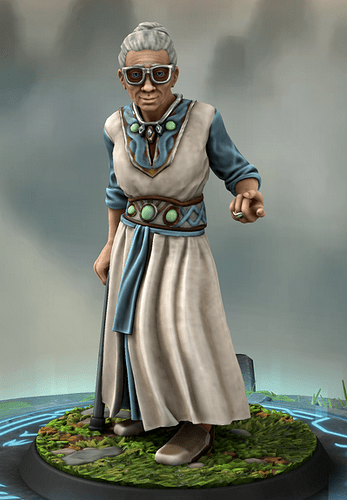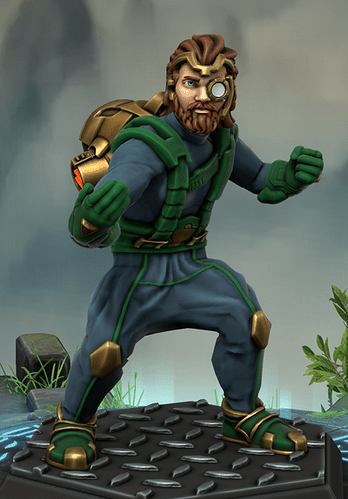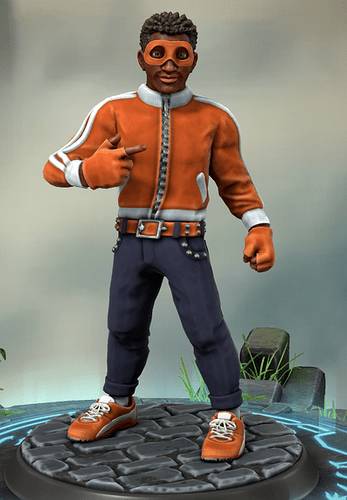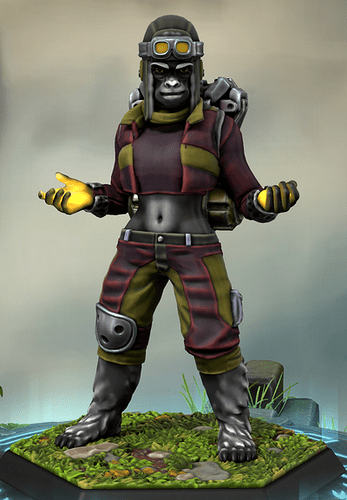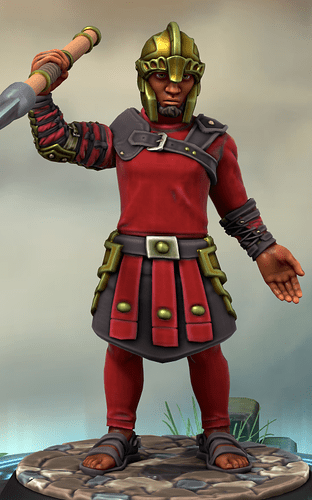Godmother
Real Name: Lucette Rhodopis, First Appearance: Heirs of Atlantis #1, February 1973
Lieutenant Type: Ally
Die Size: d10
Relation: Student, Approach: Raw Power
Traits:
- Breath of Fresh Air: As an action, activate an environment twist in its current zone, choosing its targets.
- Change of Heart: As an action, turn an environment minion into a hero minion. Step it up one die size (to a maximum of d10.) It acts at the start of your turn.
The Drifter was not the only survivor of Atlantis, nor was he the only one to sense its return. In the aftermath of the success of Darkest Depths, a limited series was rolled out to introduce more Atlantean humans, building on their history and mythology and integrating them into the world of Venture Comics. Mossby handed the task to Tony Geisman, a stalwart of Venture Comics who had been working on Vanguards, and Geisman decided to take the opportunity to link some of the line’s unexplained powers to this new setting reveal. Geisman laid out an Atlantis that had been populated by humans and fae, and whose blood carried a unique mixture of magic, dimensional energy, and otherworldly power. When Bres had cast down Atlantis thousands of years before, a handful of people had escaped, slipping out into the world; many of them had passed their powers on to children, and now hundreds of thousands of people around the world had the potential to develop Atlantean-derived powers in exceptional circumstances. The vast majority never did, but occasionally someone like Iron Will or Revenant tapped into their latent genetic powers, developing unique capabilities.
In Heirs of Atlantis, the Drifter was pulled back into the centre of the world he’d tried to leave behind when one of his former students from Atlantis called him for help. Lucette Rhodopis had studied magic and philosopher under Ezekiel, and after Atlantis fell she put her knowledge into practice, quietly travelling the world and helping people in need by offering subtle gifts or telepathically encouraging empathy and connection, while also using her abilities to punish those who were cruel and greedy; her actions had formed the basis of fairy tales as widespread as Cinderella and Baba Yaga. When Lucette learned that another Atlantean, Pythagoras, was attempting to gather the children of immortal Atlanteans for a ritual of his own – an attempt to expel Bres and reclaim Atlantis, returning it to magical supremacy over the world – she began to gather allies and heirs of her own. The Drifter reluctantly returned, and the people of Atlantis divided between Pythagoras’s supporters and those who stood for the ability of the people of Earth to make their own choices.
In the end, Godmother’s faction was victorious, and she assembled her allies to work on a new Atlantean Council, one that would work to make the world a better place. She encouraged the Drifter to do the same, returning to the world he’d hidden from for so long, and reminded him that he was the reason that she’d been able to come so far. Geisman carried the Drifter into Dark Rivers in 1974, bringing the Atlanteans into Veilwalker’s ongoing work to calm the magical world, and Godmother and her council followed along.
Behind the Scenes:
Heirs of Atlantis is one of those things that I originally tossed off as an aside, but which ended up being a big shift in how a lot of things at Venture Comics operated. It creates the Venture version of metahumans, it starts the Drifter on the path to becoming an active hero, and it retcons a lot of heroes’ backstories, so I thought it deserved to create at least one major character.
As for Godmother herself, she exists because (a) I like the idea of a student who looks older than her teacher, (b) I’m always a sucker for a little old lady who’s actually really powerful, and (c) I wanted someone who was doing the same sort of background telepathy/telekinesis as the Drifter, but in a slightly different way.
